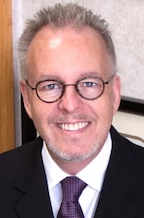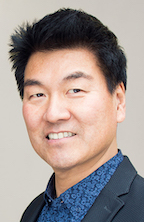| Contact |
|
UB*CDE ubcde@ubdentalalumni.org Phone: (716) 829-2061 Fax: (716) 829-3609 |
Details: 9am-4pm Friday, June 6, 2025 Cont Bfst 8:30am Lunch provided Venue: Registration UB Dental Alumni Before 05/23/25 $195, after $225 Nonmember Before 05/23/25 $245, after $275 Team member Before 05/23/25 $95, after $125 CE Credit: 6 HRS ADA/CERP Guest faculty:  Jay Bowman, DMD, MSD, Adjunct Clinical Associate Professor at The University of Michigan; Adjunct Associate Professor at Saint Louis University; Assistant Clinical Professor at Case Western Reserve University  Won Moon, DMD, MS, Full-Professorship at Ajou University; Adjunct Professorship at Forsyth Institute, Adjunct Professor, Kyung Hee University |
|
ANNUAL JOHN J. CUNAT CDE EVENT Friday, June 6, 2025 Westin Buffalo You Can’t Always Get What You Want: It’s Only Orthodontics, But I Like It! And in the End . . . is orthodontic treatment ever really finished? In the Beginning . . . having the end in mind with braces and/or aligners is critical. Closer looks at planning and executing strategies with a modicum of common sense to successfully cross the finish line. At the completion of You Can’t Always seminar, the orthodontist will:
Uno, Dos, Tres: All Screws in One Place One Concept for Three Angle Classes UNO, DOS, TRES. With the advantage of hindsight, when examining treatments involving the use of miniscrew anchorage, it appears in a parallax view that moving from buccal interradicular insertion of miniscrews to the palate often affords more reliability and versatility for orthodontic biomechanics. Specifically, one palatal insertion site for miniscrews, combined with simple laboratory modifications of transpalatal arches can be employed as anchorage to assist in the correction of a wide variety of malocclusions. At the completion of the Uno, Dos, Tres seminar, the orthodontist will:
Drastic Plastic: Improving the Predictability of Clear Aligners / Creative Adjuncts for Clear Aligners to Improve Predictability Once limitations of clear aligner treatments were identified, conceptualizing techniques to improve the predictability in producing desired results was the next logical step. A variety of concepts, methods, and adjuncts have subsequently been introduced to enhance the efficacy and effectiveness of clear aligners. As a consequence, the scope of biomechanics and type of malocclusions that caBowman and n be more predictably treated has increased, much like adjuncts have improved traditional fixed appliances. As one example, the inclusion of miniscrew temporary skeletal anchorage has permitted the addition of direct and indirect anchorage to support and control more predictable programmed tooth movements with aligners. At the completion of the Drastic Plastic seminar, the orthodontist will:
Non-Surgical Management of Extreme Vertical Problems (long and short vertical facial heights) with Micro- Implants The primary aim of this presentation is to illustrate the dental and skeletal effects of non-surgical correction of elongated and collapsed lower-vertical-heights, utilizing Micro-Implants (MI). Open bite cases are considered to be the most challenging problems, and changing the vertical dimension in patients with an extremely brachycephalic facial pattern is difficult to achieve. These problems are often treated by surgical intervention. With the advent of MI, many of these difficult cases can be managed non- surgically with satisfactory results. The biomechanics involved, the dental and skeletal changes, and the stability of these results will be closely reviewed through clinical cases. Vertical corrections of extreme magnitude will be illustrated and the stability of their results will be discussed. Both patients with vertical excess and collapse will be examined in detail with the emphasis on biomechanical considerations. The secondary aim is to explore the factors involved in diagnoses of open bite cases. Although the management of open bite cases has contributed enormously to the popularity of Micro-implant orthodontics, the limitations of such treatments are rarely discussed. Both successful and unsuccessful cases will be presented, in order to demonstrate diagnostic concepts and new paradigms. By understanding these novel concepts in diagnosis, more efficient and predictable treatment outcomes would be possible. At the Completion of the Non Surgical Management course the Orthodontist will:
Could we advance Maxilla in Mature Patients Non-surgically? Non-surgical Class III Orthopedic Correction with MSE and FM: Growing vs Nongrowing Patients The MSE has evolved since 2004, and its application has been steadily growing globally. With a proliferation of MSE related publications by multiple researchers, there is clear evidence to support its impact on craniofacial structures surrounding the maxillary complex. With this concept of orthopedic expansion, MSE can also aid in orthopedic correction of Class III cases when combined with a face-mask (FM). Clinical cases combining MSE and FM in both growing and mature patients will be discussed, and orthopedic effects will be illustrated. The use of growth modification for young patients and distraction-like protraction techniques for mature patients, in conjunction with this new device, open the door to many new possibilities. The latest findings from the research team will be presented in order to enhance depth of understanding in impact of MSE for Class III treatments. After completing this course, the Orthodontist will: · Be able to distinguish tooth-borne vs Bone-borne Expansion and Protraction · Decide the most Effective Disarticulation of Peri-maxillary Sutures for Both Children and Adults · Understand growth Modification vs Distraction-like Protraction Guest faculty: Jay Bowman, DMD, MSD Adjunct Clinical Associate Professor at The University of Michigan, an Adjunct Associate Professor at Saint Louis University, an Assistant Clinical Professor at Case Western Reserve University, a Visiting Clinical Lecturer at Seton Hill University, and Milton Sims Visiting Professor at the University of Adelaide, Australia. Won Moon, DMD, MS Professor, Department of Orthodontics, Ajou University School of Medicine, Adjunct, ADA Forsyth, Adjunct Professor, Kyung Hee University and Former Thomas R. Bales Endowed Chair in Orthodontics, UCLA (2013-2020),A Diplomate of the American Board of Orthodontics, since 2002 |

